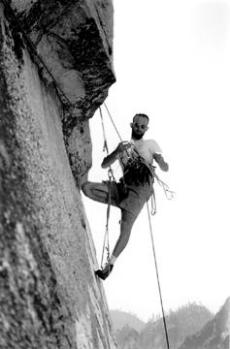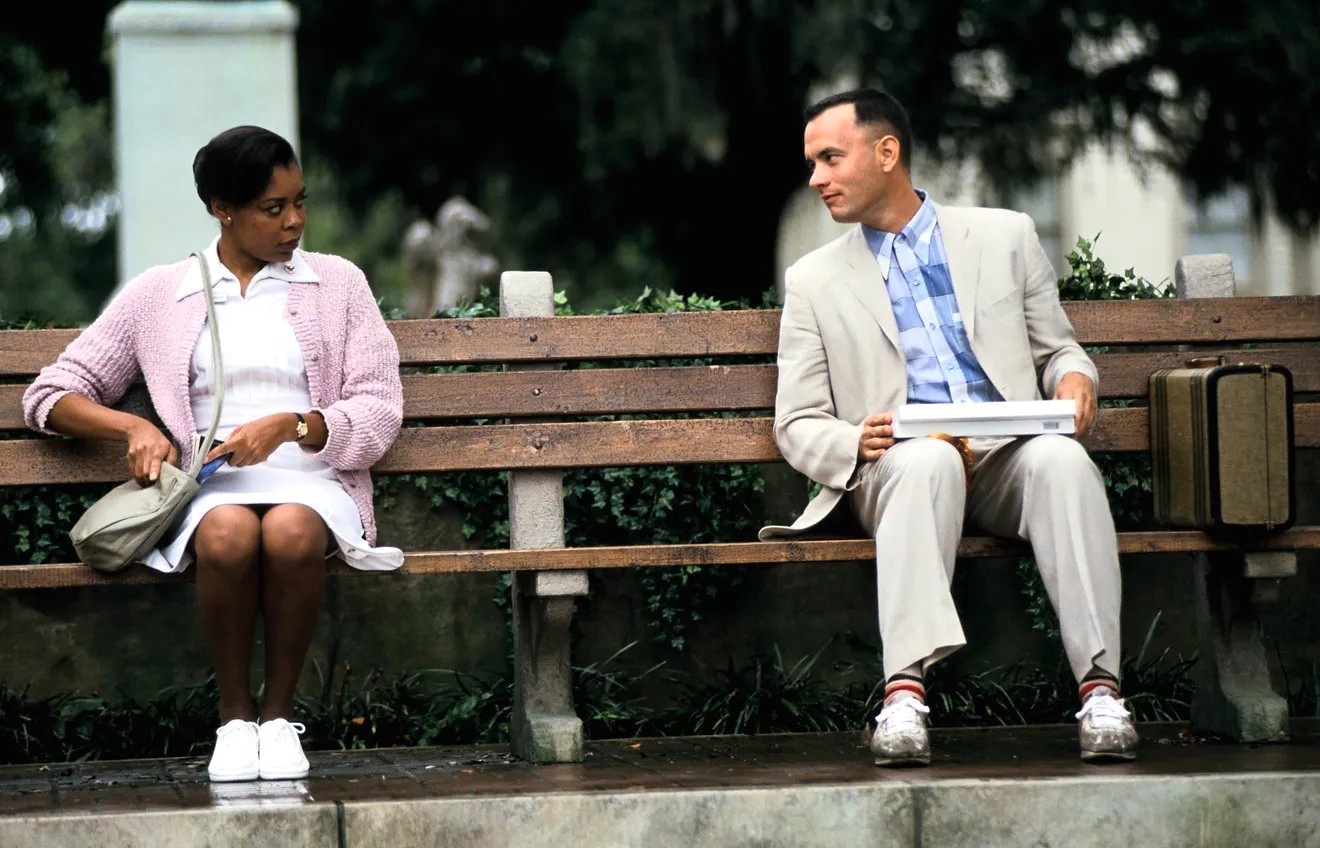This was the picture that started it for me.
I was in a sporting goods store looking for a pair of hiking boots when I noticed a bunch of equipment in one corner: ropes and boots, pitons and carabineers (pins and ‘beeners are what climbers called them back then). I picked up my first copy of Climbing magazine. Inside was a picture and story about Royal Robbins, one of the early pioneers of rock climbing. In the photo taken by Tom Frost (another climbing great), Robbins is leading the third pitch of the Salathé Wall, part of a 3,000 foot sheer granite face on El Capitan in Yosemite Valley.

In the early ‘70s, the images of these immense and majestic granite walls in Yosemite immediately grabbed my attention. I became transfixed by one in particular – a dome of white granite sliced almost perfectly in half rising 4,800 feet from the floor of Yosemite Valley. My quest was to not only climb Half Dome but to film it at the same time. So I drove back to the sports store in L.A. and over the next few months studied and learned everything I could. And I climbed – Stony Point,Joshua Tree, and an oddly shaped stack of granite known asSuicide Rock. I then drove into the Valley, walked to the base of Half Dome, looked up, nodded my head, turned, and left – completely overwhelmed.
Royal Robbins, on the other hand, did not allow his fear to keep him off those immense granite faces that ringed the valley floor. Whenever climbers spoke of the Valley, they spoke of Royal Robbins.
“Style is a personal thing,” Robbins wrote in his recent memoir, To Be Brave, “but we owe it to other climbers to leave the climb as we found it. That’s a moral issue.”
At a time when more effective “aid” equipment was being used, such as bolts drilled directly into the rock, Robbins advocated for a “clean” approach. According to his bookAdvanced Rockcraft, Robbins “…places emphasis on using equipment which is non-destructive to the mountain environment. He opposes climbs done outside the accepted mores of a given climbing center, or the prevailing style of an area. He favors what he calls ‘upward variations,’ or completing a climb using more stringent standards than used on the first ascent.”
In 1999, Robbins made clear his philosophy in a letter to me.
“Two principles have guided many of the important decisions of my life: Integrity and Love. Integrity is being true to yourself. Your character is like something you are sculpting your entire life. Every time you do something that is not ‘integrated,’ that splits you up and makes you less ‘whole.’ It’s like taking a chisel and defacing the statue of the character you have been building. Love is simply the most powerful force in the Universe; it is what holds the universe together. Things go better when we let Love guide our actions.
“I used to work in a bank. I LIKED my job! I had interesting work, friends, a good social life, good pay, and security. Then, when I went climbing on weekends, I realized I LOVEDclimbing. I was spending five days of seven doing what I liked and two days doing what I loved. Why not do what you love all of the time? Why not indeed? Risky, uncertain, adventurous? Yes!
“So I left the bank to devote myself to a life of outdoor adventure. I didn’t know where the money was going to come from. I didn’t know about marriage or family or sickness or old age. I just had the faith that if I did what I loved, everything else would fall into place around that centralizing principle. And so it has.”
Comments










